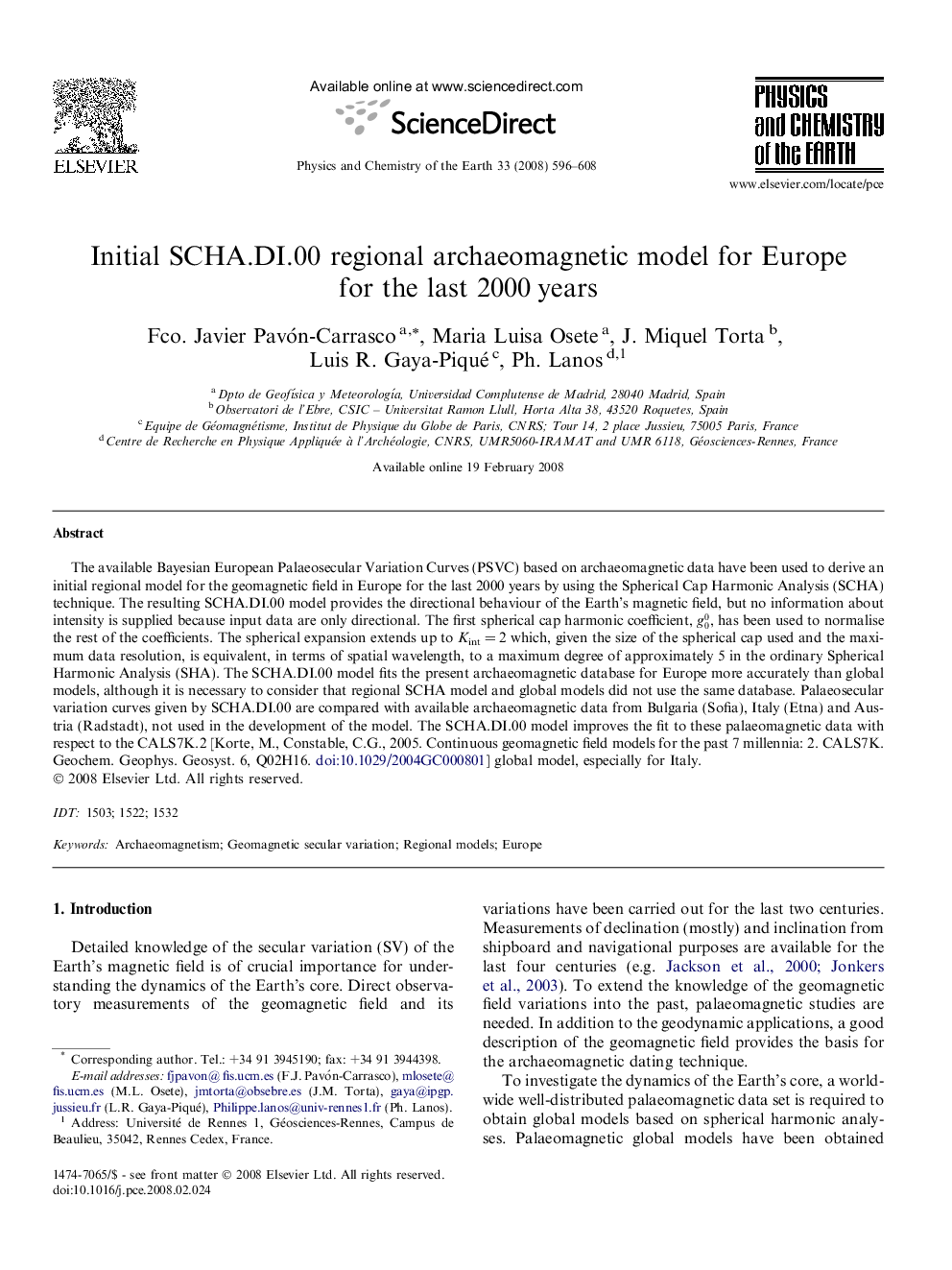| Article ID | Journal | Published Year | Pages | File Type |
|---|---|---|---|---|
| 4722041 | Physics and Chemistry of the Earth, Parts A/B/C | 2008 | 13 Pages |
The available Bayesian European Palaeosecular Variation Curves (PSVC) based on archaeomagnetic data have been used to derive an initial regional model for the geomagnetic field in Europe for the last 2000 years by using the Spherical Cap Harmonic Analysis (SCHA) technique. The resulting SCHA.DI.00 model provides the directional behaviour of the Earth’s magnetic field, but no information about intensity is supplied because input data are only directional. The first spherical cap harmonic coefficient, g00, has been used to normalise the rest of the coefficients. The spherical expansion extends up to Kint = 2 which, given the size of the spherical cap used and the maximum data resolution, is equivalent, in terms of spatial wavelength, to a maximum degree of approximately 5 in the ordinary Spherical Harmonic Analysis (SHA). The SCHA.DI.00 model fits the present archaeomagnetic database for Europe more accurately than global models, although it is necessary to consider that regional SCHA model and global models did not use the same database. Palaeosecular variation curves given by SCHA.DI.00 are compared with available archaeomagnetic data from Bulgaria (Sofia), Italy (Etna) and Austria (Radstadt), not used in the development of the model. The SCHA.DI.00 model improves the fit to these palaeomagnetic data with respect to the CALS7K.2 [Korte, M., Constable, C.G., 2005. Continuous geomagnetic field models for the past 7 millennia: 2. CALS7K. Geochem. Geophys. Geosyst. 6, Q02H16. http://dx.doi.org/10.1029/2004GC000801] global model, especially for Italy.
